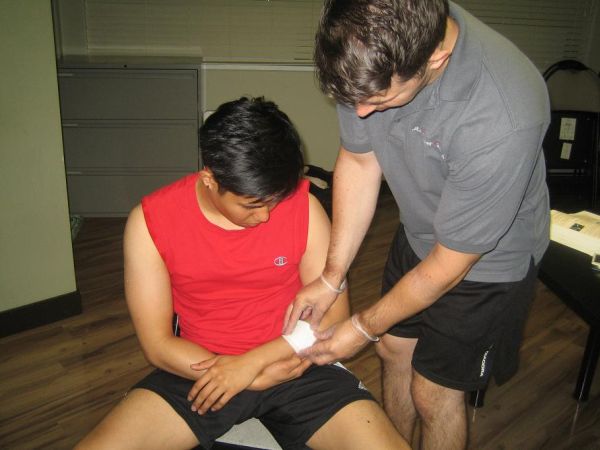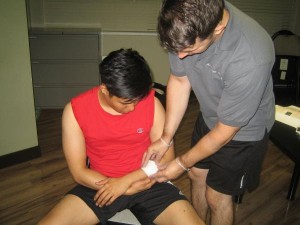Surgeonfish cuts cause abrasions and lacerations to their victim’s skinusing their bladelike spines “knives” on both sides near the tail. The sharp spine or scalpel is the reason for their appropriately termed common name. Their blades are retractable. And although there is no associated toxin or venom, surgeonfish can cause deep penetrating wounds, which may lead to tendon or nerve damage.Surgeonfish are also called doctorfish and tang.
The surgeonfish has a flat, oval-shaped body. Their colors change with their mood.Most of the 75 species of surgeonfish are found in tropical and subtropical waters, usually around coral reefs.Because they are reef fishes, divers are most prone to surgeonfish cuts. Most species of surgeon are generally not aggressive and would avoid divers when they are approached, but may attack when they are provoked. Loner surgeonfish such as the Achilles tang are the one of the very few species that is aggressive.
Symptoms of Surgeonfish Cuts
Surgeonfish cuts are usually obvious to the naked eye. The following signs and symptoms of surgeonfish cuts include:
- Active bleeding
- Usually short but deep penetrating cuts
- Immediate moderate to severe pain accompanied by a burning sensation
- In severe cases:
- Nausea
- Localized muscle aches
- Swelling around the cut
- Numbness
- Inability to move finger or toe
- Anxiety
When to Seek Medical Help Regarding Surgeonfish Cuts
There is rarely a need for medical attention regarding surgeonfish cuts. Most can be treated and managed at home, however, when any of the following symptoms are present or begin to show, it may be better to seek medical attention immediately:
- Bleeding that cannot be controlled
- Long or very wide cuts
- Signs of infection, which may include some or all of the following
- Pus discharge, which may be foul-smelling and can range in colors
- Skin surrounding the wound is red, warm and swollen
- Increasing pain
- Red streaking of the skin from the wound
- Fever
First Aid Management for Surgeonfish Cuts
The most important goals for surgeonfish cuts are to stop bleeding and avoid any complications. To do this, give first aid as soon as possible.
- If the person is still in the water, get him/ her out immediately.
- Control bleeding by applying direct pressure on the wound using any dry, clean cloth or sterile gauze.
- Once bleeding has stopped, thoroughly wash the wound with water and soap.
- Immerse the affected arm in hot, non-scalding water to relieve from pain. Do this for 30 to 90 minutes.
- Ensure that the area is scrubbed well to remove any foreign object in the wound. If the wound is not cleaned thoroughly, it may lead to infection.
- There is rarely a need for stitches as this may also lead to an infection.
- Ask the doctor before taking any antibiotics.
Medical emergencies may occur anywhere, even deep in the ocean. And thus, it is highly recommended to join in First Aid Courses before scuba diving or other places where medical help may be inaccessible. Learning how to treat and manage surgeonfish cuts and other marine animal injuries may help avoid complications.


